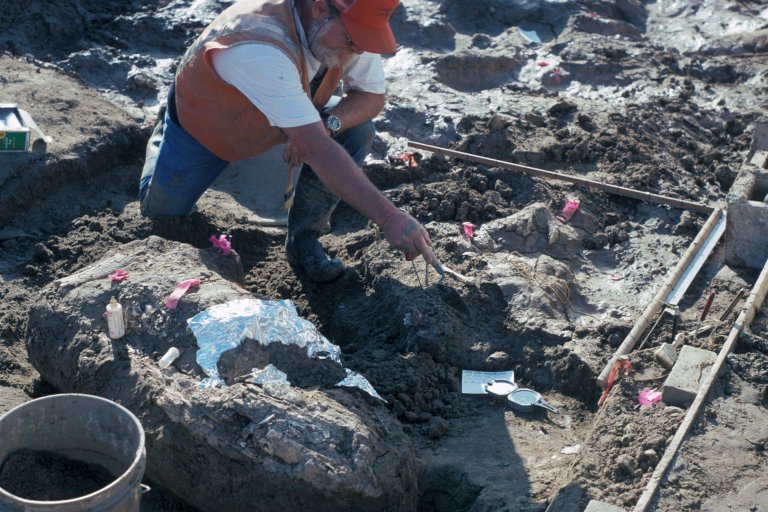Humans were in America 100,000 years earlier than we thought, study claims
The remnants of a mastodon found in a routine freeway excavation in San Diego shows there was human activity in North America 130,000 years ago — or about 115,000 years earlier than previously thought.
The fossils of the ancient mammal were revealed more than 20 years ago by paleontologists with the San Diego Natural History Museum. But it wasn’t until now that scientists were able to accurately date the findings, and possibly rewrite the history of the New World as we know it.
“This is a whole new ball game,” Steve Holen, co-director of the Center for American Paleolithic Research and the paper’s lead author, told CNN. The discovery changes the understanding of when humans reached North America.
The study, to be published this week in the science journal Nature, said the numerous limb bones fragments of a young male mastodon found at the site show spiral fractures, indicating they were broken while fresh.
Hammerstones and stone anvils were also found at the site, showing that humans had the manual skill and knowledge to use stone tools to extract the animal’s marrow and possibly to use its bones to make tools.
The discovery took place in 1992 by museum paleontologists, who were doing routine work at a freeway expansion in San Diego County. The site was named Cerutti Mastodon site, in honor of Richard Cerutti, who made the discovery and led the excavation.
Museum paleontologist Tom Deméré, who was involved in the excavation and has also been part of this study, said the project took five months and covered almost 600 square feet. He described the decades-long project as an “incredible odyssey.”

“We early on realized that this is a special site,” said Deméré, adding later the group was “salvaging fossils as they were being found.”
Five large stones, which were used to break the bones and teeth of the mastodon, were found alongside the animal’s remains, according to the study. The site also contained fossils of other extinct animals, including dire wolf, horse, camel, mammoth and ground sloth.
Scientists specialized in various fields, from archaeology to the environment, have done research at the Cerutti site since its discovery.
Advanced radiometric dating technology allowed scientists to determine the mastodon bones belong to the Late Pleistocene period, or 130,000 years old, with a margin of error of plus or minus 9,400 years.
“The bones and several teeth show clear signs of having been deliberately broken by humans with manual dexterity and experiential knowledge,” Holen said in a press release.
Experts agreed that the earliest records of human ancestors in North America is about 15,000 years old, but the discovery of the Cerutti site “shows that human ancestors were in the New World ten times that length of time,” said paleontologist Lawrence Vescera.
“This site really nails it because the evidence is really clear.”
The 11 scientists involved in the study told CNN it’s too early to tell the impact of the new findings. For now, they want the general audience to see it and understand it, and for their peers to study it — and even challenge it.
The archaeological treasures found at the Cerutti site will be on display at the San Diego museum. And a partnership with the University of Michigan will allow for even more people to see 3-D models of some of the specimens at their Online Repository of Fossils.





